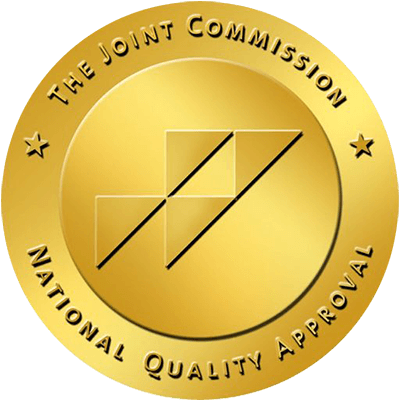Written by Ashley Kane,
Brightside Health
8 Minute Read

Medically reviewed by:
Christopher Betley, PMHNP
Clinical Director, Psychiatry
10 Minute Read
Depression can feel heavy—mentally, emotionally, and physically. While therapy and medication remain powerful treatments, there’s a growing body of evidence supporting something surprisingly simple yet deeply effective: exercise. From walking to dancing to yoga, physical activity doesn’t just benefit the body—it boosts the brain, too.
In this guide, we’ll explore the science behind exercise and depression, the best types of movement for mental health, and how to stay motivated even when you feel stuck. Whether you’re just starting out or returning after a long break, every step counts.
Exercise and Depression: Does Exercise Help With Depression?
If you’re wondering, “Can exercise help depression?” research says yes—physical activity can significantly reduce symptoms of mild to moderate depression. In fact, in some cases, exercise is as effective as antidepressant medication, particularly for those experiencing low energy, poor sleep, or lack of motivation.
Why does physical activity help improve mood? Exercise helps depression because regular movement helps the brain produce mood-regulating chemicals, reduces stress, and reestablishes a sense of control. While it’s not a standalone cure, it’s a vital and empowering tool in a well-rounded mental health plan.
And are there mental exercises to help with depression? Absolutely. Practicing mindfulness or engaging in cognitive behavioral therapy, for example, are also shown to reduce depressive symptoms.
How Does Exercise Help Depression? The Effects of Exercise on Mental Health
So, how does exercise improve mood? Does working out help depression? Any exercise and depression study will show that the effects are wide-ranging and both biological and psychological:
1. Boosts Endorphins and Brain Chemistry
Exercise stimulates the release of endorphins, your body’s natural feel-good chemicals. It also increases serotonin and dopamine, neurotransmitters commonly targeted by antidepressants. This chemical shift can improve mood, reduce anxiety, and enhance motivation.
2. Enhances Sleep Quality
Many people with depression struggle with insomnia or restless sleep. Physical activity promotes deeper, more restorative sleep by regulating circadian rhythms and reducing stress hormones.
3. Builds Self-Efficacy and Routine
When you complete a workout for depression—even a short one—you prove to yourself that you’re capable. This builds self-efficacy, a key ingredient in recovering from depression. Establishing a regular routine also restores a sense of predictability and control.
4. Increases Energy and Reduces Fatigue
Though it may feel counterintuitive, movement actually increases energy levels over time. Gentle, consistent exercise can combat the physical heaviness and lethargy that often accompany depression.
5. Reduces Inflammation and Stress
Emerging research links chronic inflammation to depression. Exercise helps reduce systemic inflammation and regulates cortisol, your primary stress hormone, leading to a calmer, more balanced mind.
Want to speak 1:1 with an expert about your anxiety & depression?
5 Best Exercises for Depression
Does working out help with depression? Yes, but not all movement is equal. The best exercise for depression is the one you’ll actually do.
Which activity might be most beneficial to improve your mood if you are upset or depressed? Here are some forms of physical activity for depression treatment backed by science and real-life success stories:
1. Walking
Physical activity and depression doesn’t mean having to spend out of pocket. Walking is accessible, free, and requires no equipment. A daily 20-30 minute walk, especially outdoors, can dramatically boost mood and provide meditative benefits.
2. Dancing
There’s growing interest in the connection between dancing and depression. It combines aerobic movement with rhythm, music, and joy, activating areas of the brain associated with emotional processing.
3. Yoga and Stretching
Yoga combines physical movement with breathwork and mindfulness, reducing anxiety and depression symptoms. Even basic stretching promotes nervous system regulation.
4. Strength Training
Weight lifting or bodyweight exercises build physical and emotional strength. Research indicates that resistance training can improve depressive symptoms, possibly due to enhanced confidence and improved brain function.
5. Group or Team Activities
Joining a class or recreational league adds social support, which is protective against depression. Even a virtual class or workout buddy can create a sense of connection and accountability.
How to Get Motivated to Exercise When Depressed
So, how to exercise when depressed? When you’re depressed, getting started is the hardest part. Here’s how to gently ease into movement:
- Start small. Commit to just 5–10 minutes. Often, getting dressed and starting is all it takes to keep going.
- Lower the bar. Walking around the block or doing a few stretches counts. There’s no need for perfection.
- Use music or habit pairing. Listen to a favorite podcast while walking, or stretch while watching TV.
- Celebrate effort, not outcome. Any movement is progress, even if you don’t “feel better” right away.
- Recruit support. Ask a friend to join you or check in on your goal.
How Often Should You Work Out? How Long Does It Take for Exercise to Help Depression?
Wondering how to workout when depressed? Experts recommend aiming for 30 minutes of moderate-intensity exercise (like brisk walking or cycling) 3–5 times per week. But even less frequent or shorter sessions provide meaningful benefits.
Is exercise more effective than antidepressants? Some people notice mood improvements after just one session, while medication takes longer to take effect. For others, however, consistent activity over a few weeks (averaging 2–4 weeks) is necessary to see a change.
Consistency matters more than intensity. It’s better to walk daily for 15 minutes than burn out after two long gym sessions.
How to Work Out When Depressed
When motivation and energy are low, these tips can help you get moving and take part in depression relief activities:
1. Choose Activities You Tolerate or Used to Enjoy
Don’t force yourself into a workout you hate. Think about what you once enjoyed—dancing, swimming, hiking—and start there.
2. Set Ridiculously Achievable Goals
Instead of aiming to “work out for an hour,” try “put on workout clothes” or “stretch for two minutes.” Momentum builds naturally.
3. Be Kind to Yourself
Progress won’t be linear. Some days you’ll do more, some days less. Every effort is valid. Avoid all-or-nothing thinking.
4. Use Visual Cues
Leave your shoes by the door or set out your clothes the night before. These environmental nudges reduce decision fatigue.
5. Track Progress Gently
Use a simple journal or app to track how you feel after exercise. Seeing patterns may motivate you to keep going.
Need Help Taking the First Step?
Depression can make it hard to move, but you don’t have to figure it out alone. Whether you’re curious about how to work out when depressed or need support with a depression diagnosis and getting started with treatment, help is here.
At Brightside, we combine therapy, medication, and lifestyle tools—including exercise for depression treatment—to support your full mental health journey.
Take our free online depression test to better understand your symptoms and get a personalized plan for feeling better, including support for lifestyle change.
Want to speak 1:1 with an expert about your anxiety & depression?
Depression and Exercise: Key Takeaways
Whether it’s to combat the signs of depression in men or ease depressive symptoms in women, exercise is a powerful, natural tool. It boosts brain chemistry, improves sleep, builds confidence, and reduces stress, often with fewer side effects than medication.
Walking, dancing, yoga, and strength training all offer unique benefits. An exercise and mental health graph will show that even a few minutes of movement a day can make a difference. Additionally, combining exercise and antidepressants in some cases may enhance the way the body responds to the medication and potentially reduce relapse.
Mental exercises for depression also shouldn’t be overlooked. For example, practicing mindfulness or embarking on cognitive behavioral therapy sessions can be incredibly helpful.
Most importantly, you don’t need to do it alone. Support is available, and recovery is possible.
FAQs
Why does physical activity help improve mood?
Physical activity boosts mood by increasing endorphins, serotonin, and dopamine—brain chemicals that help reduce stress and enhance well-being.
Exercise also lowers cortisol levels, improves sleep, and builds confidence, all of which contribute to better mental health. Even short, regular movement can significantly lift mood over time.
Is combining exercise and antidepressants safe?
Yes, combining exercise with antidepressants is generally safe and often more effective than either approach alone.
Exercise can enhance the effects of medication by improving brain function and reducing side effects like fatigue or weight gain. Always consult your doctor to tailor a plan to your needs.
Should you get a structured exercise program to help your depression?
A structured exercise program can greatly support depression recovery by providing consistency, goals, and a sense of achievement.
Whether it’s walking, swimming, yoga, or strength training, regular movement with a plan keeps motivation high and helps track progress—key for long-term mental health improvements.
What to do if exercise is painful?
If exercise is painful, start with low-impact activities like walking, swimming, or gentle stretching.
Pain may be a sign to modify your routine or address an underlying issue. Speak with a physical therapist or doctor to design a safe, manageable plan that supports both your physical and mental health.
Is exercise as effective as antidepressants?
In somecases, regular exercise can be as effective as antidepressants for mild to moderate depression.
It boosts mood-regulating brain chemicals and promotes resilience. While not a replacement in severe cases, exercise is a powerful, low-risk tool that can complement or, for some, substitute medication with medical guidance.














